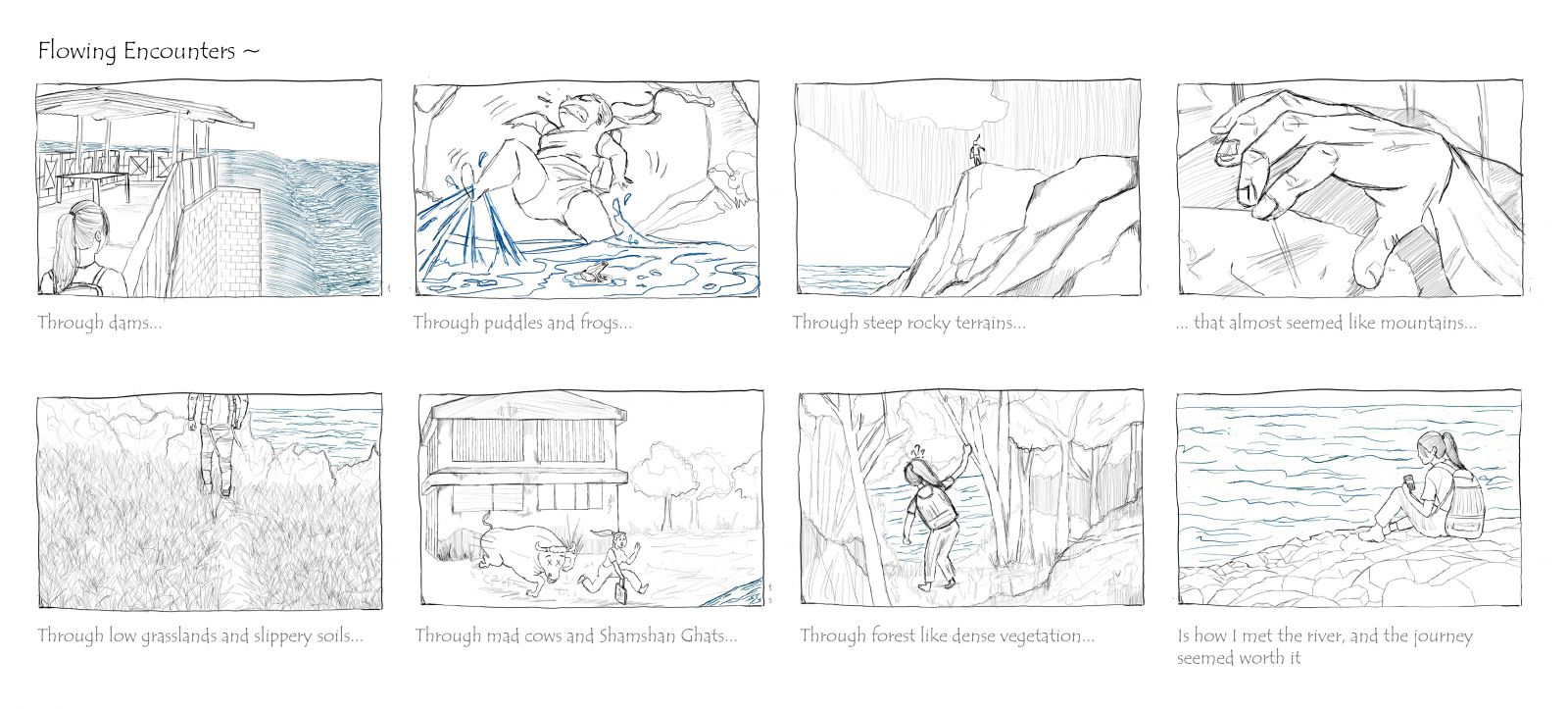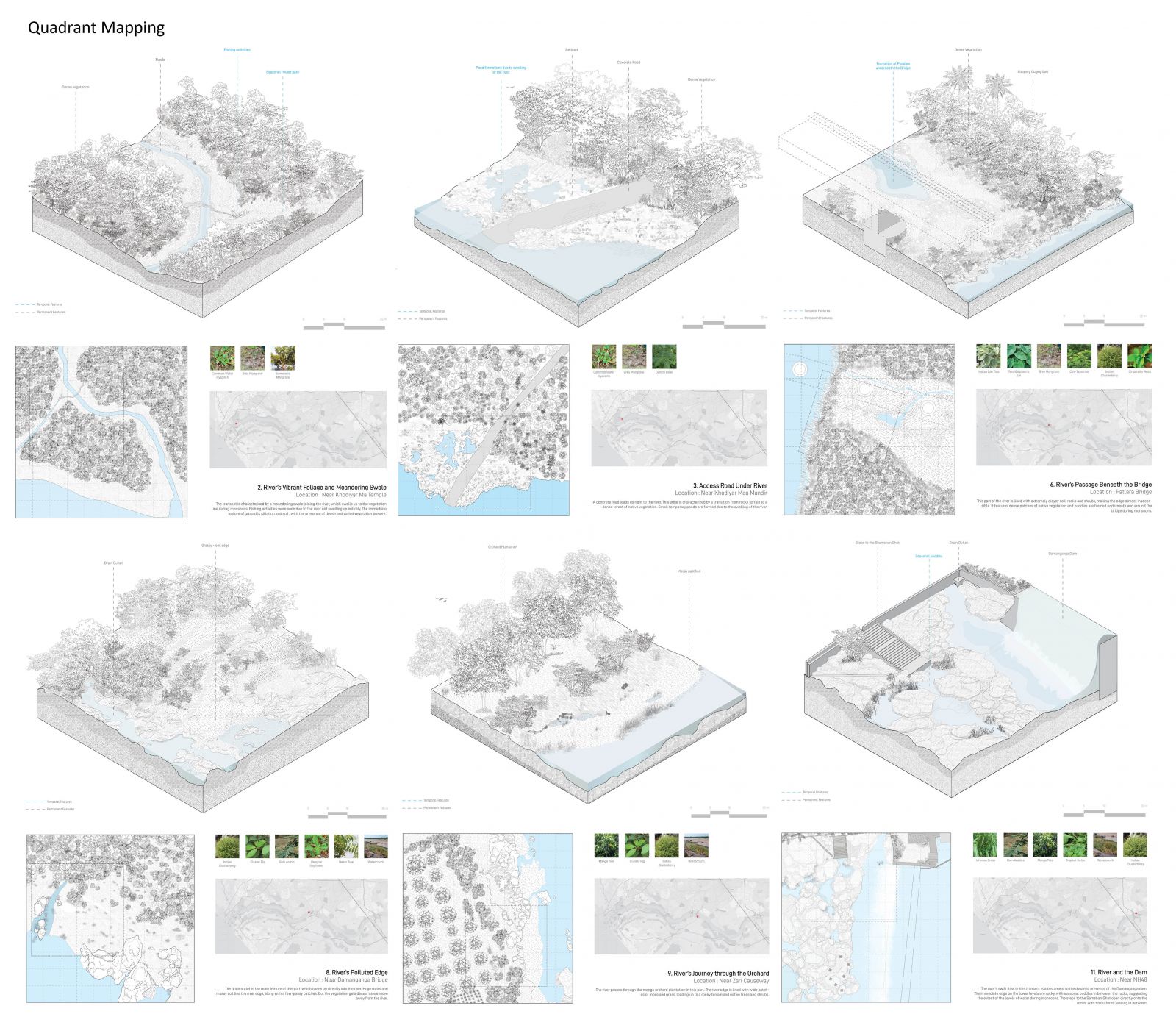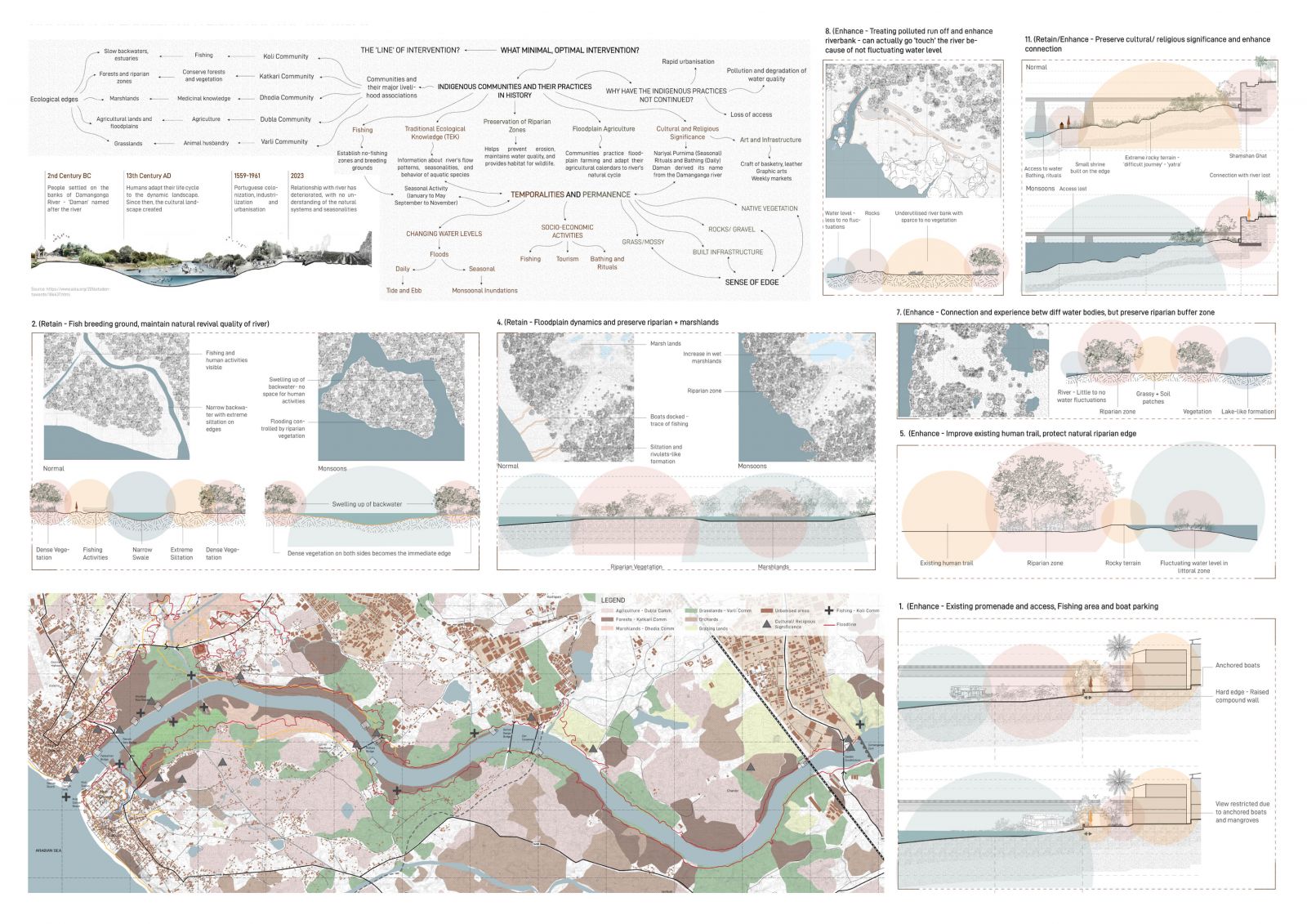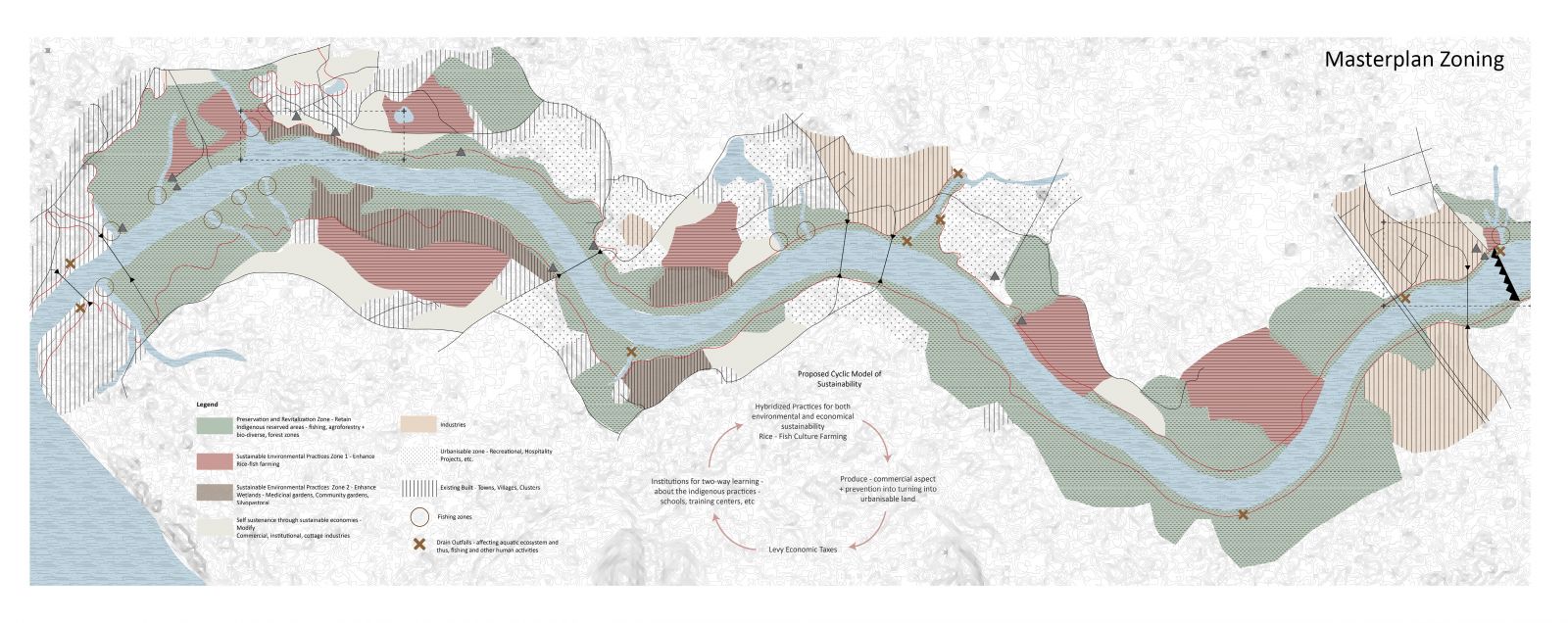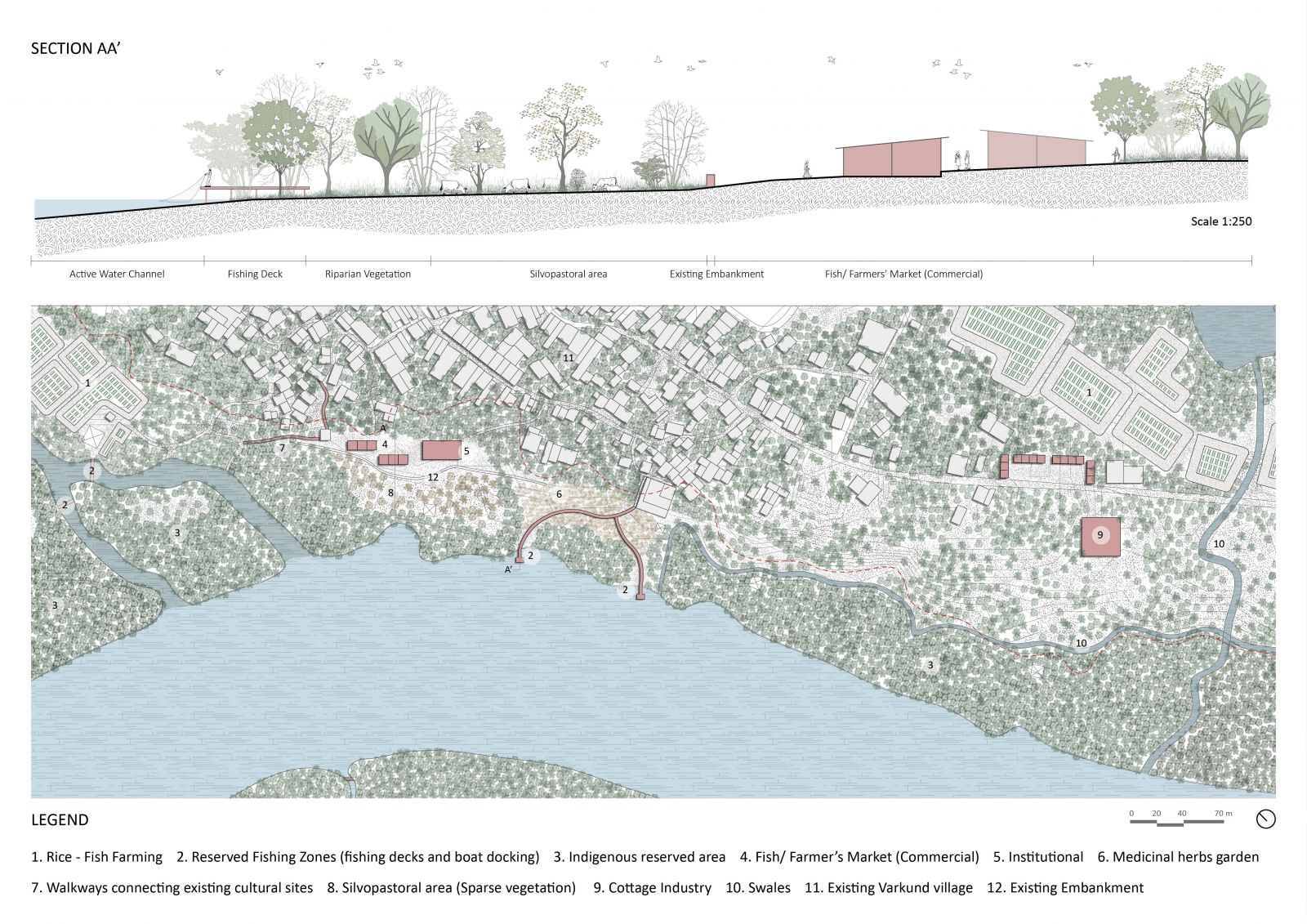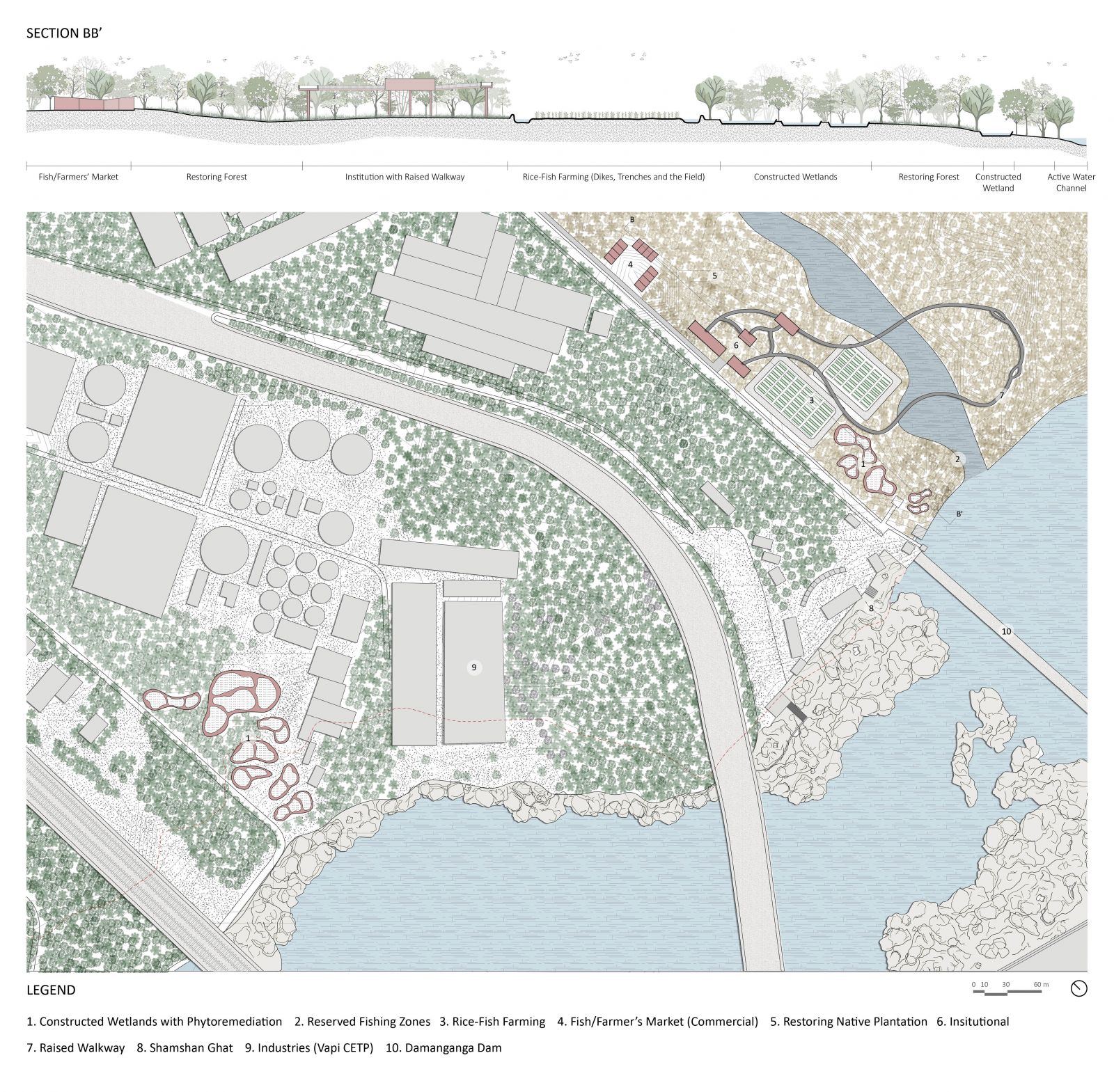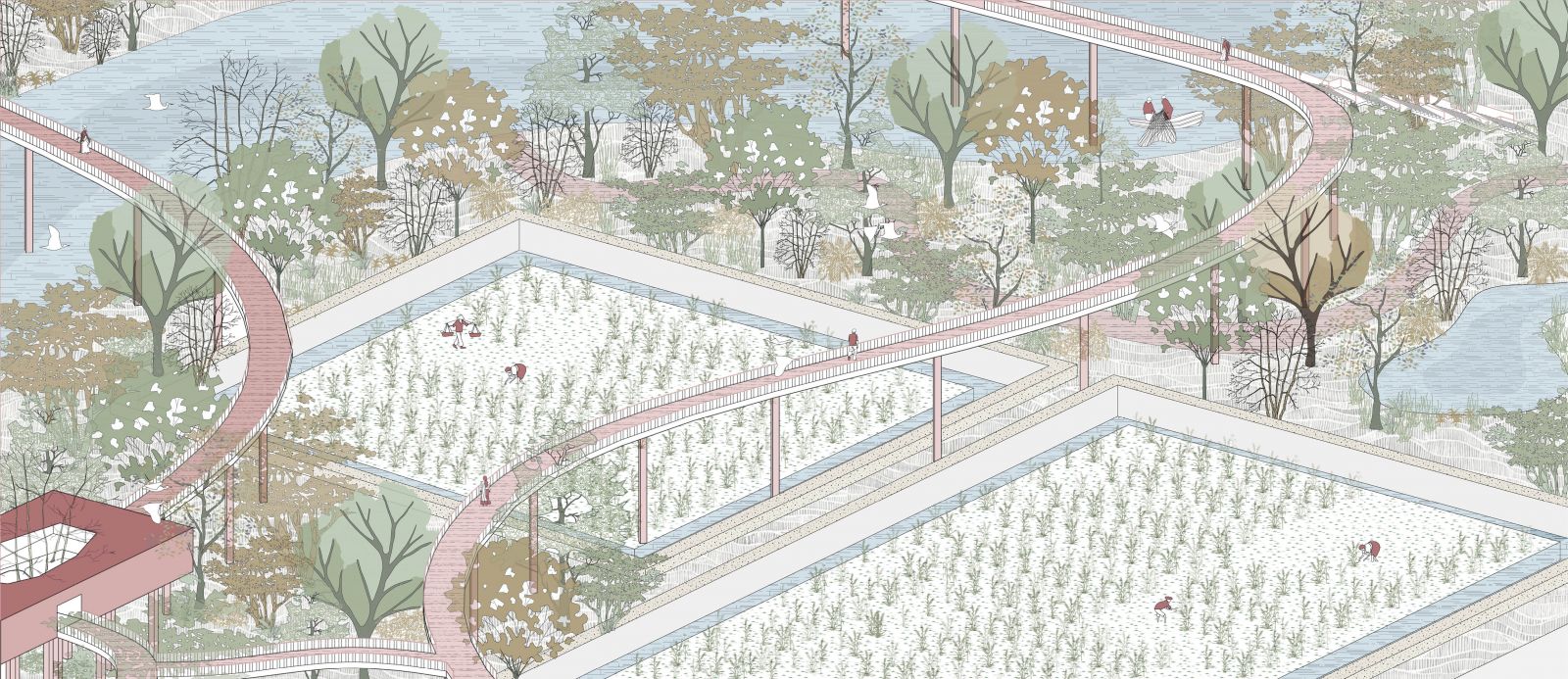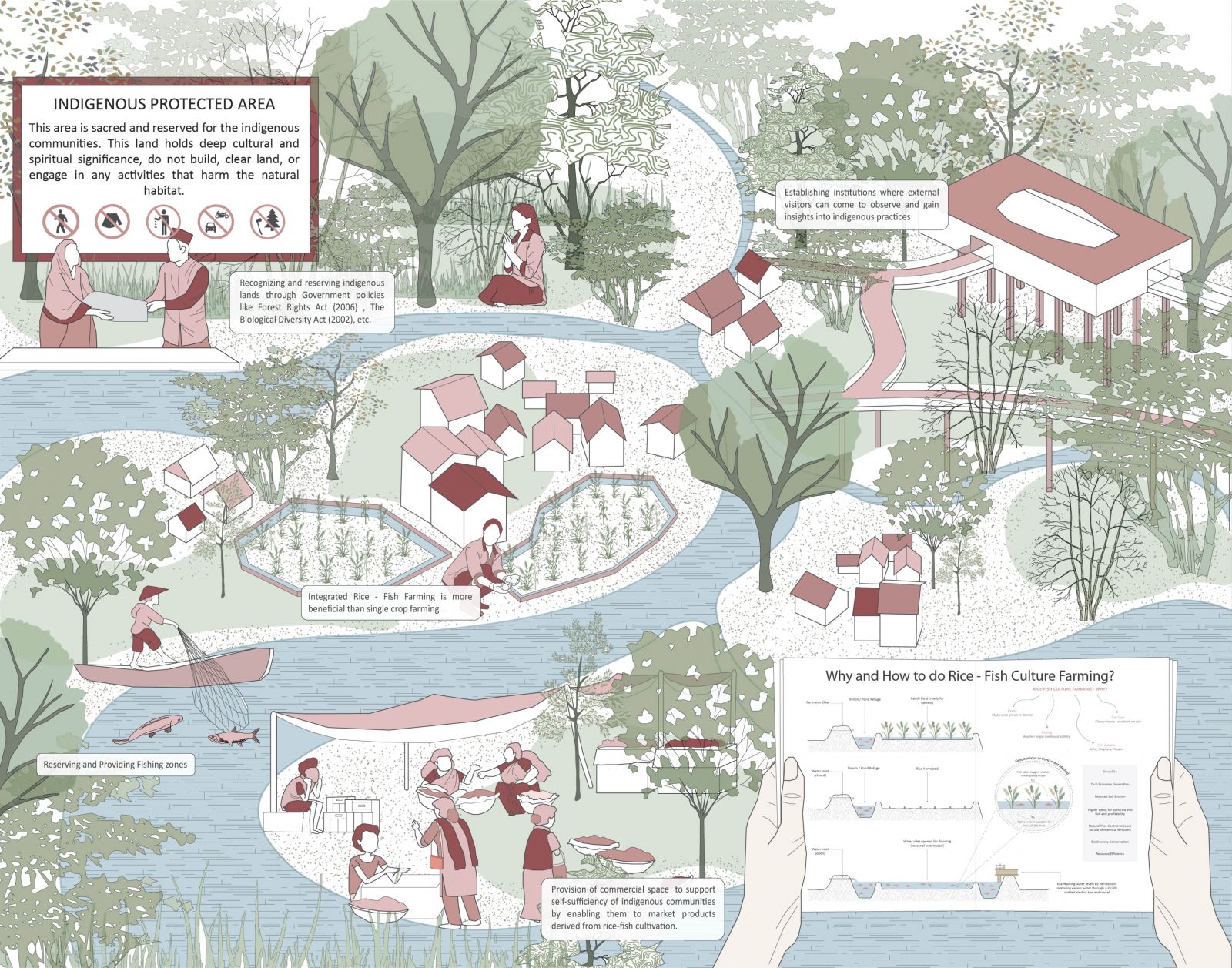Your browser is out-of-date!
For a richer surfing experience on our website, please update your browser. Update my browser now!
For a richer surfing experience on our website, please update your browser. Update my browser now!
In India, the connection people share with rivers and nature runs deeper than the European perspective, which often views them merely in terms of aesthetics or as water resources. The naming of the city Daman after the River Damanganga serves as a testament to the profound reverence and bond that local indigenous communities have with their environment.
The aim of the project is to re-territorialize urban spaces by acknowledging, safeguarding, and incorporating Indigenous practices. The goal is to blend these practices with strategic interventions that promote a more comprehensive and sustainable approach to revitalizing and utilizing the river and natural systems. This approach stems from the recognition that indigenous communities prioritize and respect rivers and natural resources, consciously making minimal and optimal interventions to avoid exploiting nature.
It is crucial to discard the outdated perception of these communities and their practices as primitive and unimportant. Instead, we must recognize and embrace these indigenous and cultural connections. As urban designers, by acknowledging these ties, we can ensure a more resilient and sustainable strategy for the preservation and utilization of urban river systems. This, in turn, will contribute to an overall enhancement of ecology, biodiversity, and river health.
